Summary
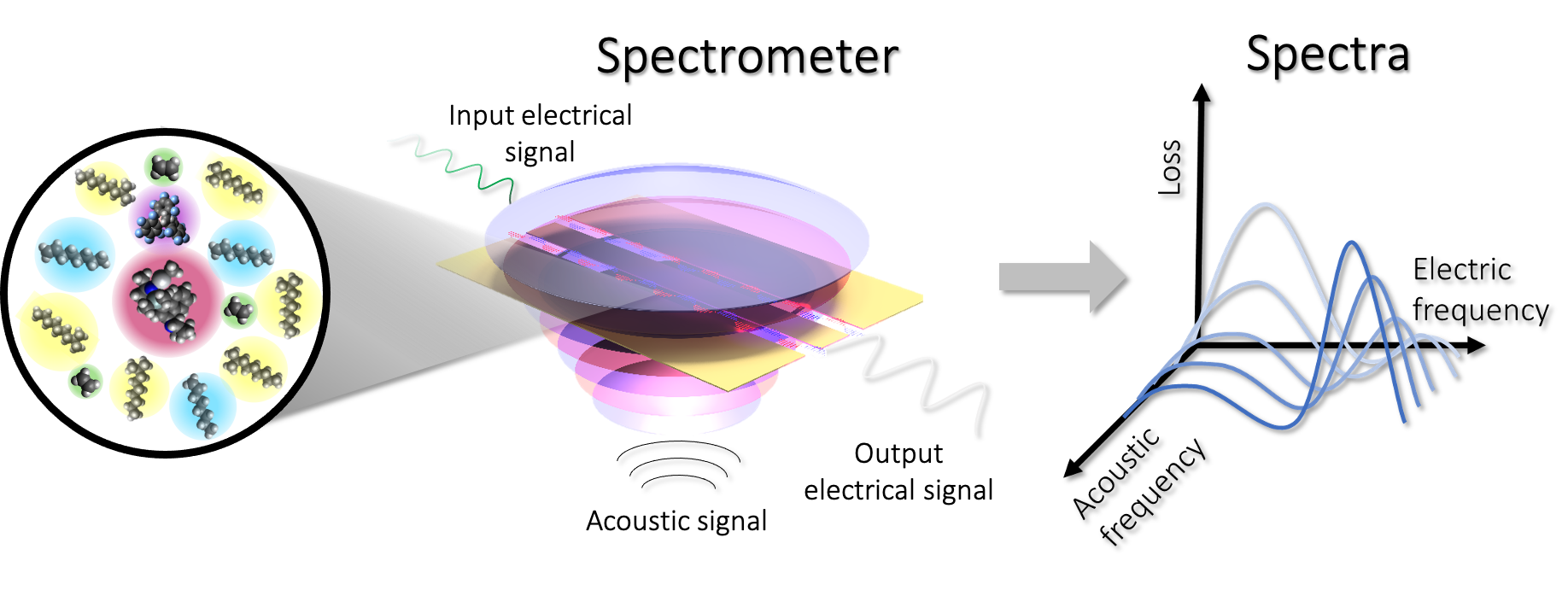
NIST’s Material Measurement Laboratory and Communications Technology Laboratory are developing a new spectroscopy for intermolecular interactions. The team is pioneering an electric-acoustic spectrometer that selectively drives and detects intermolecular interactions and developing new electric-acoustic spectral simulations. This spectroscopy is a step towards tailored intermolecular interactions to increase chemical separation yield and optimize separations design.
Description
We have a number of opportunities to collaborate with us. See below for details.
What does this project aim to do for the chemical industry?
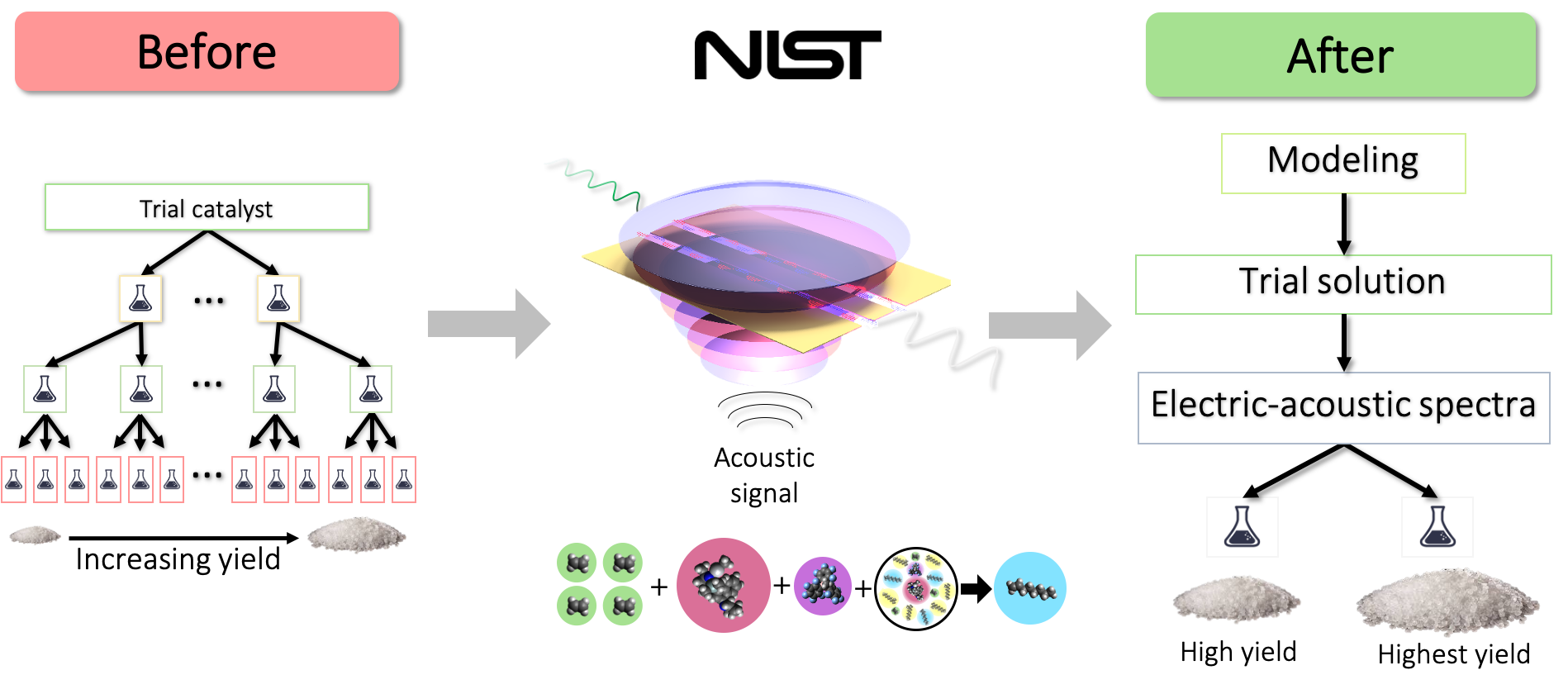
Many industrial processes depend on the intermolecular environment- the solvents and ions that surround a molecule. These interactions impact separations, catalysis and crystallization, but they are particularly difficult to measure. We are developing a new spectroscopy to identify intermolecular interactions for industry to use.
What technical problems are we trying to solve?
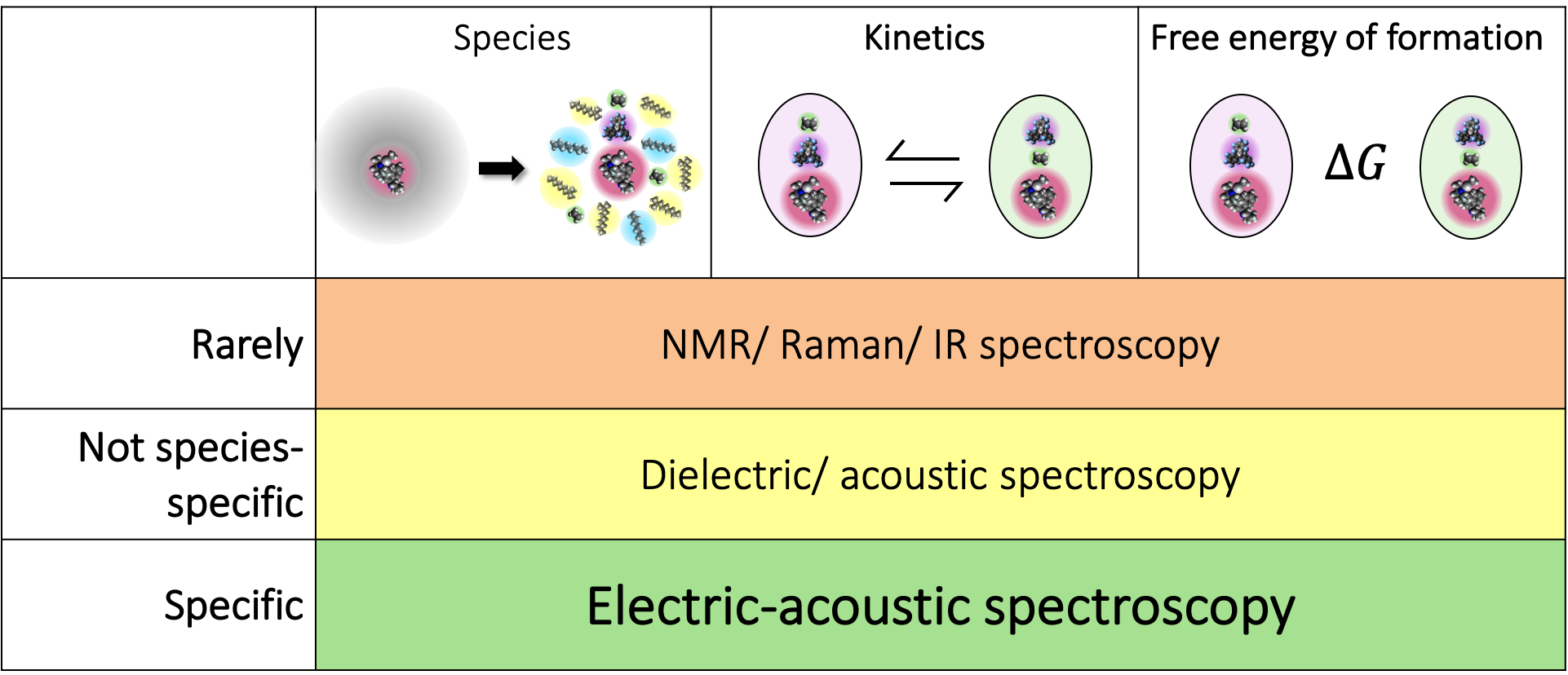
Existing techniques can’t fully probe the intermolecular environment, and new approaches are needed to measure the kinetics and thermodynamics of intermolecular interactions. We are developing a new spectroscopy to identify species and their reactions in solution.
The Team
Our project has three focus areas: the spectrometer, theory, and validation.
Spectrometer
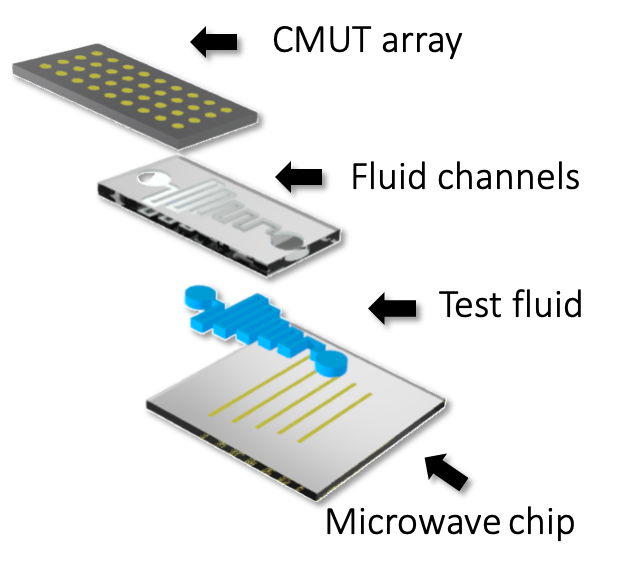
The spectrometer team (Angela Stelson, Nate Orloff, and Jim Booth) combines Capacitive Micromachined Ultrasound Transducers (CMUTs), on-chip microwave measurements, and microfluidics. The CMUTs will generate an acoustic signal to perturb the solution, and the microwave measurements will detect the dipoles of intermolecular interactions.
Theory
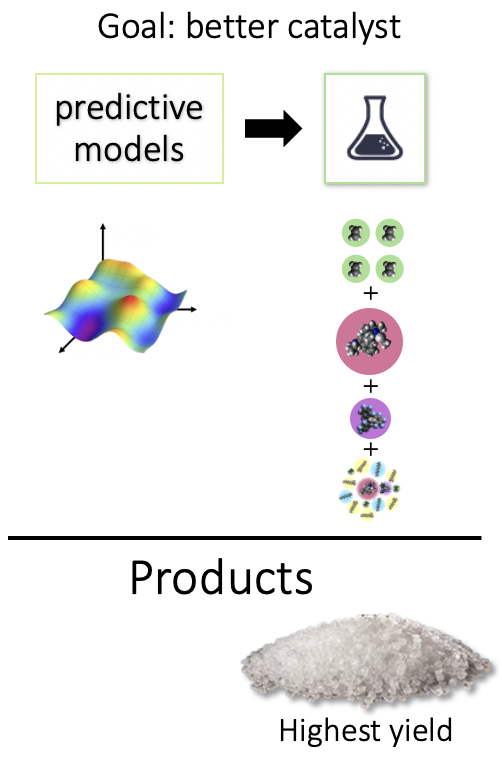
The theory team (Kathleen Schwarz and Chris Muzny) develops simulation tools that connect signals in the experimental electric-acoustic spectra to weakly-interacting complexes and their concentrations in solution. We will simulate electric-acoustic spectra with molecular dynamics, decomposing the spectra into signals for each species at a given acoustic frequency.
Validation
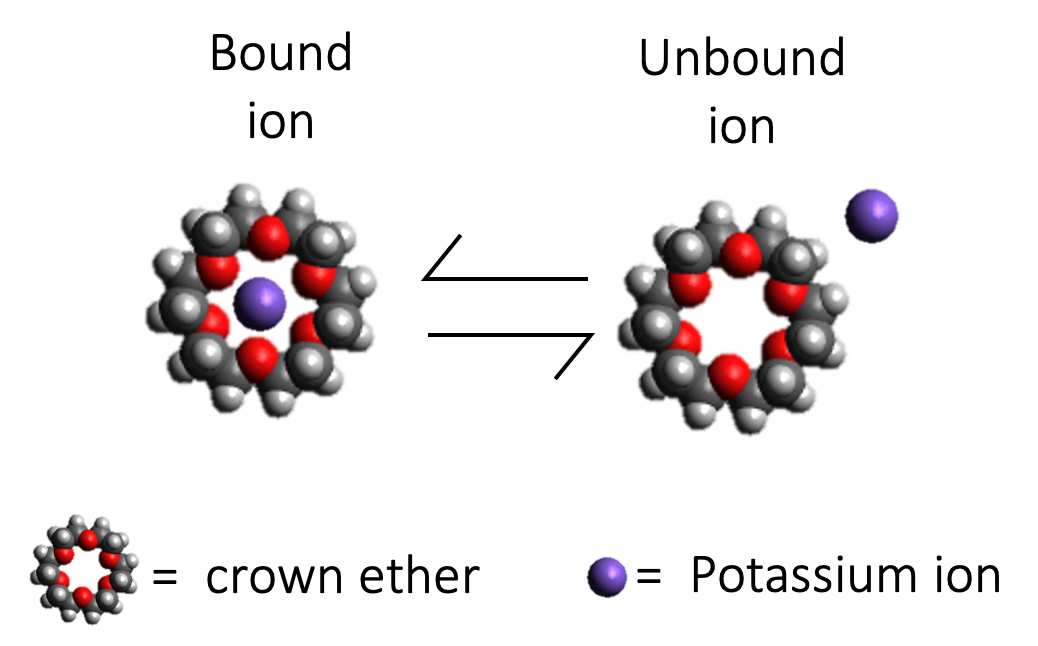
The validation team (Tara Lovestead and Jason Widegren) uses existing spectroscopy techniques including high pressure NMR, acoustic spectroscopy and dielectric spectroscopy to validate the electric-acoustic spectroscopy. The team will probe simple, well-known intermolecular interactions such as the ion-pairing of crown ethers.
Want to Be INVOLVED?
This project is funded through the Innovations in Measurement Science program, and we have two different mechanisms for collaborating with us on this project:
The NRC Postdoctoral Program
The NRC research associateship program has opportunities available for research related to this project (eligibility requirements include US Citizenship). If you are interested or have any questions, please email the researchers listed on the NRC postings. Application cycles are in January and August, and we recommend contacting potential advisors well in advance of this deadline.
Spectrometer: Microwave Microfluidics, Advanced Microwave Microfluidics for Real-time Diagnostics and Chemical Analysis
Theory: Computational electrochemistry
Validation: High-pressure Nuclear Magnetic Resonance (NMR) Spectroscopy of Intermolecular Interactions, Electric-Acoustic Spectrometer Fabrication and Validation with Existing Spectroscopic Techniques
Research Collaborations
Collaborations are available to US and international citizens. Please email the contacts in the individual collaboration descriptions below for more information.
Spectrometer: Electric-Acoustic Spectrometer Fabrication and Nonlinear Measurements and Calibrations
Theory: DFT of solutions and interfaces
Validation: High-pressure nuclear magnetic resonance (NMR) spectroscopy of intermolecular interactions
Electric-Acoustic Spectrometer Fabrication Collaborator
We are seeking collaborators to work with NIST researchers to develop on-chip electric-acoustic spectroscopy to characterize intermolecular interactions in solution. We will integrate high-frequency electronic devices with ultrasound acoustic devices and microfluidics. Our approach leverages advanced on-wafer calibration and measurement techniques to accurately define the broadband impedance of custom-designed on-chip devices. Methods include design of on-wafer devices and packaging, fabrication, and testing at microwave and mm-wave electrical frequencies and ultrasound acoustic frequencies.
Our team is located in Boulder, CO.
Contact:
Dr. Angela Stelson, RF Electronics Group
NIST Boulder
Angela.stelson [at] nist.gov (Angela[dot]stelson[at]nist[dot]gov)
Nonlinear Measurements and Calibrations Collaborator
We are seeking a postdoc collaborator to work with NIST researchers to develop on-chip electric-acoustic calibrations to support our new electric-acoustic spectroscopy. To do this, we will develop nonlinear on-wafer measurements and calibrations, as well as thermodynamic theory to connect our electric-acoustic spectra to intermolecular interactions. Our methods include finite element analysis, measurements at microwave and mm-wave electrical frequencies and ultrasound acoustic frequencies, and thermodynamic and electrokinetic theory of ionic solutions.
Our team is located in Boulder, CO.
Contact:
Dr. Angela Stelson, RF Electronics Group
NIST Boulder
Angela.stelson [at] nist.gov (Angela[dot]stelson[at]nist[dot]gov)
Density Functional Theory Collaborator
We are seeking collaborators to work with NIST researchers to apply ab initio methods (and potentially ab initio molecular dynamics) to characterize the interactions of ions in solution and at electrochemical interfaces. They would collaborate with teams of other theorists and experimentalists performing classical molecular dynamics, spectroscopic measurements and characterization of these systems. Experience in applying machine learning techniques is optional but would be a strong advantage. Potential collaborators with a PhD degree in chemistry, physics, or related fields are encouraged to contact kathleen.schwarz [at] nist.gov (kathleen[dot]schwarz[at]nist[dot]gov)
Our team is located in both Gaithersburg, MD and Boulder, CO, and we collaborate remotely across locations.
High-pressure nuclear magnetic resonance (NMR) spectroscopy of intermolecular interactions
We are seeking a postdoc collaborator to develop high-pressure NMR spectroscopy for the measurement of intermolecular interactions of ions in solution. Measurements of ion-pairing equilibria or ion-complexation equilibria (in crown ethers or organometallic cages, for example) are of interest. A short-term goal of this project is to validate the performance of electric-acoustic spectroscopy, a new technique being developed at NIST for measuring intermolecular interactions. Longer-term goals include the development of highly efficient separations and catalytic reactions. This collaboration is with an interdisciplinary team of experimentalists and theorists. Potential collaborators should contact Dr. Tara Lovestead (tara.lovestead [at] nist.gov (tara[dot]lovestead[at]nist[dot]gov)) or Dr. Jason Widegren (jason.widegren [at] nist.gov (jason[dot]widegren[at]nist[dot]gov)).
Our team is located in Boulder, CO.

